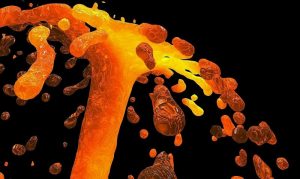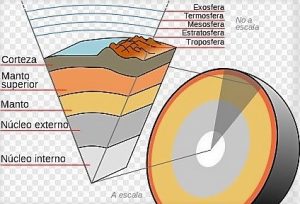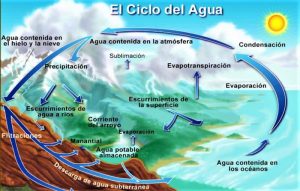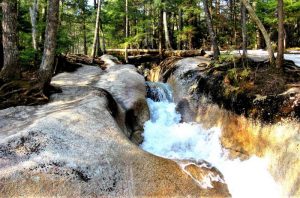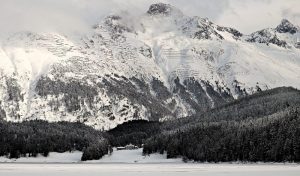Asthenosphere
The asthenosphere is the upper zone of our Earth's mantle. Located below the lithosphere, approximately between 30 and 130 kilometers deep. It is formed or composed of solid and semi-fused materials that allow continental drift. On it, tectonic plates move. This is the region that has the highest viscosity rate and mechanically is very weak with respect to the top layer of the Earth. The asthenosphere is responsible for collecting heat from the mesosphere and projecting it into the lithosphere through a convection system, which can be compared to the boiling water process.
What is the asthenosphere?
The asthenosphere is the top of the Earth's mantle located below the lithosphere. It consists of solid and semi-fused materials that allow the continental drift development and the isostasy’s. There are tectonic plates on it that are in constant movement and work by means of a convection system.
Asthenosphere characteristics
The asthenosphere is composed of semi-fused and solid materials at the same time. On it floats the lithosphere, which is a rigid layer that is composed by the external part of the mantle and by the terrestrial crust allowing the tectonic plates to move. Another characteristic of the asthenosphere is that it is responsible for promoting the renewal and expansion of the ocean floor. This is due to the fact that in its composition we find a very important component called basalt, which is an igneous rock that, through an extrusion process, flows through the oceanic ridges.
It is a part of the upper mantle of the earth and is located just below the lithosphere, which is directly involved with the movement of tectonic plates and isostatic adjustment processes. Although it is a very hot layer, the pressure in it keeps it like plastic and its density is relatively low. Earth’s seismic waves pass through it as it is also a low velocity zone. Because of their temperature and pressure conditions the rocks become ductile and move slowly, measuring thousands of kilometers. The heat that radiates flows into the earth.
Asthenosphere composition
The asthenosphere is composed of rock material. It is formed by iron and magnesium silicates. This chemical composition is almost identical to the lower layer of the earth or mesosphere. In contrast, lithospheric rocks contain more silica, but less aluminum, sodium, and potassium. It is then basically composed of sedimentary rocks, ferromagnetic minerals, magmatic material, radioactive materials and metamorphic rocks.
Function
One of the important functions of the asthenosphere occurs inside. Within it, a phenomenon called convection currents occurs. This means that the materials found in the lower zones are warming up, and when they warm up, they tend to rise towards the higher zones of the asthenosphere. In the same way, the materials in the higher zones cool down, and for this reason, these materials will descend. This causes the materials to be in continuous motion, causing an important effect on tectonic plate motion. When the continental plates begin to move, as a consequence of the convection currents of the asthenosphere, geological phenomena such as tectonic faults, or displacements between masses of the earth’s crust may occur, or earthquakes may even occur (when the rubbing or collision of two plates is strong). Another important function is that it contains the magma that volcanoes expel when they erupt.
Importance of the asthenosphere
The asthenosphere is a layer of great geological importance to the Earth’s mantle. It is responsible to create new earth crust, which means that new lands will be produced. This occurs in ocean ridges, where convection pushes the asthenosphere to the surface. Also its importance lies in the tectonic plates that are located in it because it collaborates with the movement of the continental masses with respect to each other, due to plate tectonics. The convection currents that have their origin in this layer are very important because they are the ones that define the different movements of the plates. It is also responsible for the creation of new crust in the earth.
How to cite this article?
Briceño V., Gabriela. (2019). Asthenosphere. Recovered on 24 February, 2024, de Euston96: https://www.euston96.com/en/asthenosphere/
